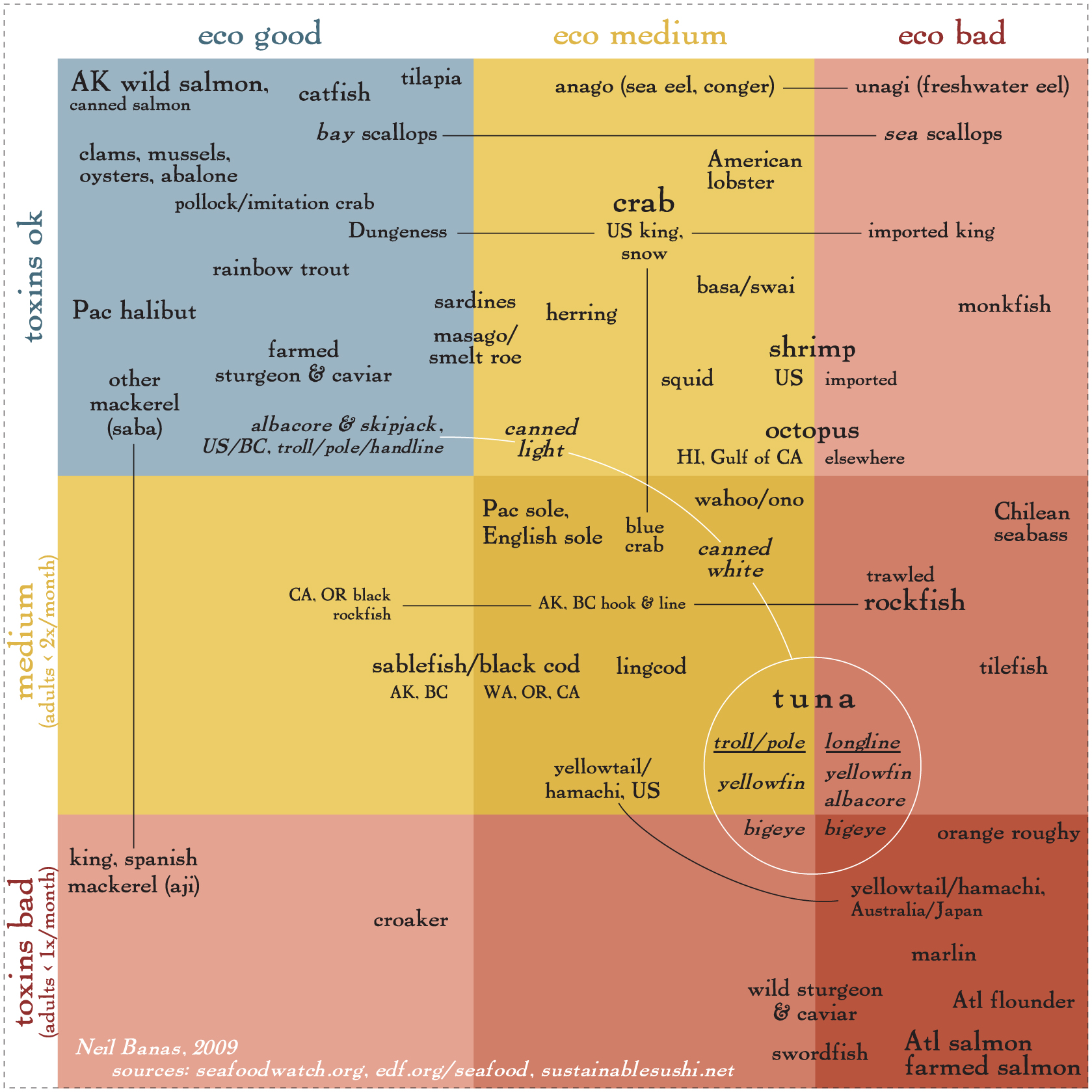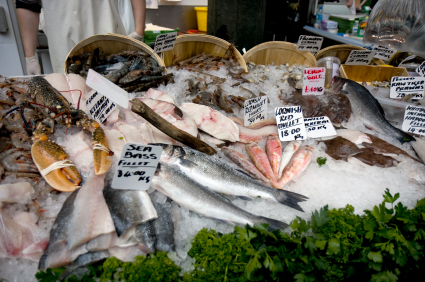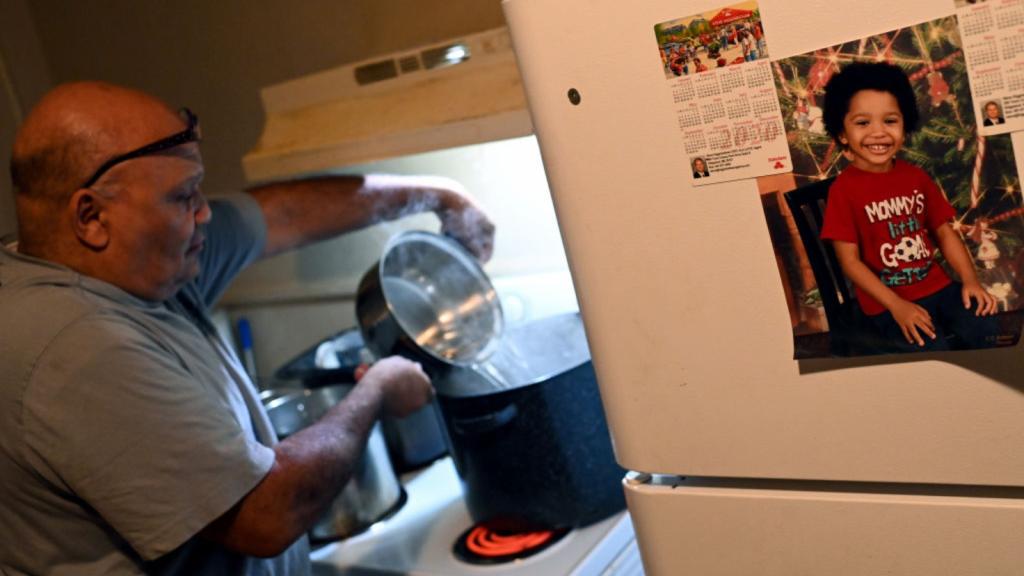 Chart by Neil Banas. Here’s a PDF version.
Chart by Neil Banas. Here’s a PDF version.
Not long ago, I arrived at a fishmonger (Carrboro, N.C.’s Tom’s Seafood) just before closing time looking for a main course — preferably one that didn’t wouldn’t contribute to stripping the oceans bare or addle my tired brain with lashings of mercury (courtesy of coal-fired power plants). The workers were breaking down the counter and trying to get out of there — but indicated they’d be happy to serve me.
“What’s fresh and from around the North Carolina coast?” I asked the woman behind the counter. She didn’t hesitate. “This tilefish is great,” she said, pointing to a pile of fleshy, good-looking filets sitting on ice. She said it with an air of, “and please tell me how much you want right now, so i can get the hell out of here.” There wasn’t much else remaining in the bin — some salmon, which couldn’t be from around here, and some Spanish mackerel, which I knew to contain significant levels of mercury.
Somewhat sheepishly, I whipped out my “smart phone” and consulted its “Seafood Watch” app from Monterey Bay Aquarium, to see how tilefish does in terms of sustainability. I navigated to the Southeast section, and found that “tilefish, golden” from the U.S. South Atlantic is on the “avoid” list, while from the Mid-Atlantic, it’s a “good alternative.” Hmmm. The North Carolina coast is right on the cusp — just below Mid-Atlantic, and on the northern fringe of South Atlantic. As for mercury levels, I didn’t have a handy tool for that.
I looked back at the remaining options, and glanced back at the counter woman. Her hands were on her hips. She was ready to finish breaking down the bin. “Is the tilefish from a small boat?” I asked. At Tom’s Seafood, they don’t know much about the Monterey overfished list, or about mercury levels, but they are blunt about where their fish comes from. She replied that it did come from one of the boats that her boss Tom deals with frequently. For me, that means something — small-scale fishermen are less likely to destroy the ecosystems that sustain them than highly mobile industrial fleets.
Decision time. I bought — even though it might have been an overfished species, even though I had no idea whether tilefish has enough mercury to turn me into a human thermometer. (H/t, David Mamet.)
Not so triumphantly, I returned to the car. “Tilefish,” I reported to my girlfriend. “What?” she replied, not happy. She’d been reading Recipe for America, the new book by blogger Jill Richardson. Jill cites tilefish as a particularly bad accumulator of mercury. Ouch.
We ate it anyway — it was delicious in a Thai red curry. But we didn’t feel great about it.
All of this is to say: Let us all thank Neil Banas for combining sustainability info and toxin info on one easy-to-read chart (above; PDF here). And let’s urge him to roll out an iPhone app!


